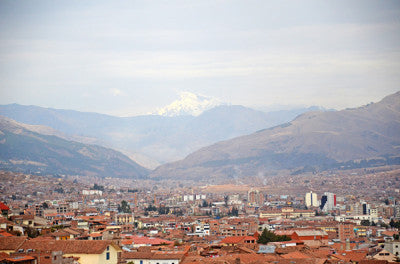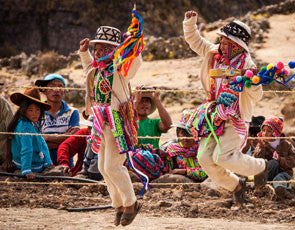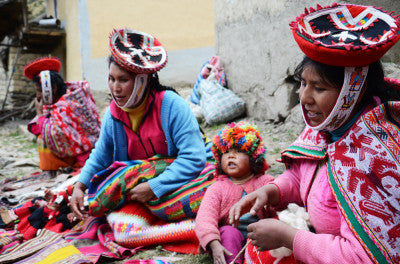Reading Megan’s blog post last week put me to thinking, as almost everything about my work here in Peru has done and continues to do. My thoughts took me back to the same feeling of wonder and inspiration that I felt when seeing traditional Quechua weaving in action for the first time. The first meeting that Sarah Confer and I had with the weavers from both communities, Rumira Sondormayo and Chaullaqocha, and the kind smiles that I received (and that were accompanied by some curious looks that I think may have meant to say “this gringa sure does have a funny haircut”). And then it struck me that in the blink of an eye, my first six months working as the Project Coordinator and Community Liaison for TOP were quickly coming to an end.
That is not to say that I’ll be on my way back to dear Pennsylvania anytime soon! This adventure is much too exciting to be thinking about anything outside the rolling Andes and the thousands of years of Peruvian history that I’m invited to explore each day. But I’m taking this as an opportunity to reflect on what I’ve learned and how much I’ve grown in this personal and professional challenge that I take on each morning. I would say that I do so “with vigor” but there is some very strong coffee and lots of it that I should give credit to before doing so.

From my first week, purchasing chullos in the remote village of Pitukiska.
Perhaps my first point that I’d like to express will come across as biased, however it stands to be said that what Threads of Peru seeks to do, our mission and our goals, is beautiful. Even before signing on to the team, I knew the truth of that statement, as I’m sure that all of our followers and friends do as well. Cusco is a living testament to the ingenuity of the Peruvian people through the ages, from long before the time of the Incas, as well as the pride that almost all feel in their culture and their contribution to world cultural heritage. But once you reach the outskirts of urban society, to where ancestral traditions of alpaca herding, potato farming and backstrap weaving are still integral to everyday life, the push to abandon tradition in hopes of better economic and social security is strongly felt.
The tourism industry in Cusco, boasting 2,000,000+ visitors annually, all but forgets these remote villages. We at Threads of Peru and our friends at Apus Peru do not feel that this is any way to move forward, whether here in Peru or anywhere else in the world. History is our shared heritage, as much to the weavers of these communities as to my much missed family back home. None should be asked to leave behind their cultural identity to take part in economic development and benefit from its riches. This truth is my inspiration every day to keep pushing and keep thinking because this project and this team, however small we may be, believes that we can achieve this change, from poverty to participation, for Quechua weavers of the Sacred Valley.
Which leads me to perhaps the most difficult and complicated exercise that I’ve been invited to participate in by accepting this position, that being walking the line between business and charity. The ultimate goal is sustainability and in order to achieve that goal, we must secure enough markets and sales opportunities for Quechua woven textiles for this project to spin round. However, achieving that goal is no easy task, referring back to the “pushing and thinking” above. For us, the cycle of sustainability turns on the point that we cannot reinvest in community development if we do not first achieve sufficient sales numbers. But when our partners, the Quechua weavers of the Sacred Valley, know all too well the daily reality of malnutrition and inadequate housing in their communities, they as well as us struggle to visualize the future (i.e. business) instead of the right now (i.e. charity).

From last week, visiting Sacred Valley Health and their beautiful family of puppies! Certainly another perk of the job.
This knowledge, of the beauty of cultural heritage, of the inequality of social and economic development, and of the sincere need for both short and long term solutions to rural poverty, is among the many things that I’ve welcomed into my life over the past six months. I’ve been assured by my experience roaming this wild terrain and becoming friends and associates of its tamers that we are capable of achieving those goals that will make sustainable development a reality, in Peru and worldwide. And in the company of the inspiring men and women that I have met on this adventure thus far, I’m ready for at least another six months discovering what my contribution will be!
Read more









